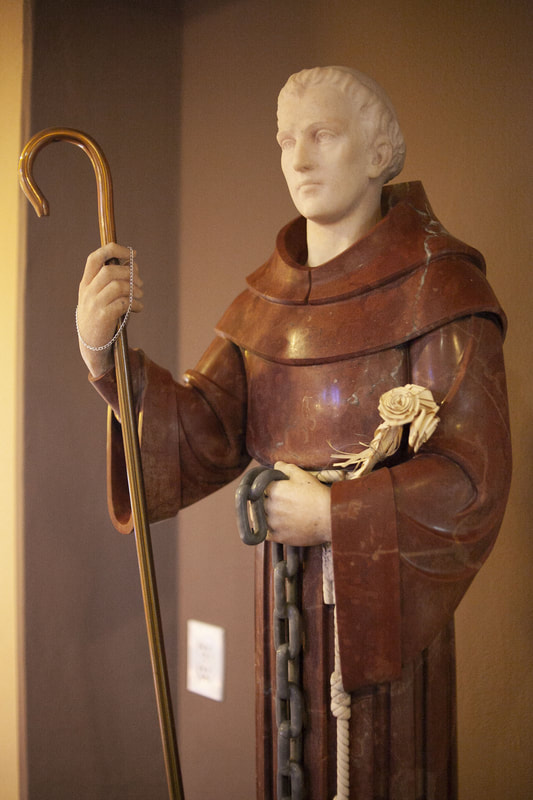History
|
Shortly after the turn of the century, a young community at the western edge of Chicago was rapidly becoming populated with the descendants of Bohemian and Polish immigrants who had first settled in the city. Catholic families who moved into South Berwyn found it more convenient to worship at the neighboring parish of St. Mary in Riverside, Illinois than to attend mass at St. Mary of Celle Church in the north end of Berwyn.
The Catholic population of Berwyn increased to such an extent that in 1918, Archbishop George W. Mundelein established a mission in South Berwyn. St. Leonard Mission was reorganized as parish in June 1932 and soon the community started to finance the construction of a combination church-school building at the corner of 33rd St. and Clarence Avenue which was dedicated in the spring of 1924. During these years, the Ursuline Sisters staffed St. Leonard school for one year after which time the Sisters of St. Joseph from La Grange, Illinois were given charge. In 1931, under Fr. John P. Campbell leadership, construction began on a modern school at the southwest corners of 34th and Clarence Ave. The Gothic style structure, designed by Joe W. McCarthy, was opened for classes in September 1932 and the building was dedicated on October 9, 1932. The building had twelve classrooms, offices and an auditorium for 525 people. It was erected at a cost of $122,000. Between 1944 and 1949, the parish experienced tremendous growth. Two decisions were made which determined the course of parish life for the next few years. Plans were drawn up for a new church and the high school program was discontinued in favor of providing accommodations for more grammar school students. In November 1949, the old church building was razed to make way for the new church, the cornerstone of which was laid on June 4, 1950. For the next two years, the 1,500 families in the parish worshipped in the school auditorium. While construction proceeded on the new church, a rectory was constructed in February 1951. George S. Smith designed the new church in a modified English Gothic style that was completed at a cost of $380,000. Cardinal Stritch blessed the new church on July 1, 1951. Two years later, in 1953, a new convent was built. Despite a loss of territory following the formation of St. Piux X in Stickney, Illinois in July 1954, St. Leonard parish continued to increase in membership. By 1957, 580 children were enrolled in the school and more classrooms were needed. In 1969, St Leonard was renovated to conform to the liturgical changes of the Second Vatican Council. As part of this program, the church was air-conditioned and a new sound system was installed. The golden jubilee of the founding of the parish was celebrated on August 19, 1973 and Cardinal Cody presided at the Mass of Thanksgiving. Today St. Leonard continues to be a welcoming community where all its members grow in their relationship with God and one another. With different and new ministries, activities and service programs, St. Leonard Church in Berwyn is a community where many find not only a place to worship but also a church where they can share their gifts, talents and faith. |
About St. Leonard
According to some legends, he was a Frank courtier who was converted by St. Remigius at Christmas 496, refused the See from his godfather, King Clovis I, and became a monk at Micy in France. Leonard asked the king to grant him personally the right to liberate prisoners whom he would find worthy of it, at any time. He secured the release of a number of prisoners, for whom he has become a patron saint.
He lived the rest of his life as a hermit and was rewarded by the king with all the land he could ride around on a donkey in a day for his prayers, which was believed to have brought the Queen through a difficult delivery safely. According to his legend, Leonard became a hermit in the forest of Limousin, where he gathered a number of followers. There he founded the abbey of Noblac, around which a village grew, named in his honor.
St. Leonard is the patron saint of women in labor and prisoners. His feast day is November 6.
He lived the rest of his life as a hermit and was rewarded by the king with all the land he could ride around on a donkey in a day for his prayers, which was believed to have brought the Queen through a difficult delivery safely. According to his legend, Leonard became a hermit in the forest of Limousin, where he gathered a number of followers. There he founded the abbey of Noblac, around which a village grew, named in his honor.
St. Leonard is the patron saint of women in labor and prisoners. His feast day is November 6.


